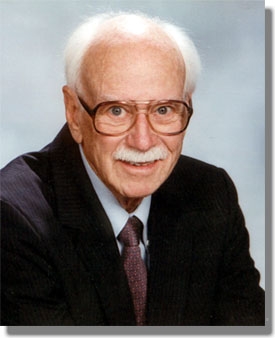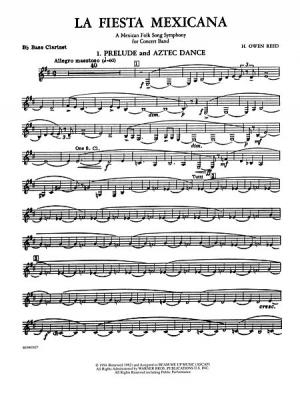American composer and conductor H. Owen Reed (1910-2014), a professor at Michigan State University, spent five months in Mexico over the winter of 1948-49. After several weeks in Mexico City and Cuernavaca, with side trips to Taxco and Acapulco, he spent a couple of months in Chapala. This trip, funded by a Guggenheim Fellowship, was the inspiration for his most famous composition, “La Fiesta Mexicana: a Mexican Folk Song Symphony for Band.”

H. Owen Reed
The idea for the symphony first came to him after reading Stuart Chase’s fine book, Mexico; a study of two Americas (1946). Reed envisioned a three-movement symphony referencing folk songs and popular music that would also lend itself to choreography. And, indeed, though usually performed by dedicated wind orchestras, “La Fiesta Mexicana” has sometimes been presented in conjunction with costumed dancers and staging.
The opening movement of the symphony, Prelude and Aztec Dance, is based on a march Reed heard in Cuernavaca and Aztec dance music from central Mexico. The second and third movements—Mass and Carnival—were inspired by Reed’s time at Lake Chapala: “In a small choir loft in Chapala, I heard the chant from the Liber Usualis which I used in the second movement…. The two-against-three rhythm of the two bells used throughout “La Fiesta Mexicana” was a standard cliche of the young musicians who seemed to have little respect for my early morning sleep. Again this was in Chapala.” Part of the third movement makes use of a mariachi rendition of El Son de la Negra. [1]
The work was premiered by the US Marine Band in 1949. The first major label commercial recording, released in 1954, “burst on the classical record scene and became an overnight sensation. Music lovers were dazzled by the color and inventiveness of the score.” [2]
 The work marked a milestone in the “genre of long-form compositions for wind ensemble” and has been recorded dozens of times since.
The work marked a milestone in the “genre of long-form compositions for wind ensemble” and has been recorded dozens of times since.
The score includes the following notes on each movement:
“I. Prelude and Aztec Dance — The tumbling of the church bells at midnight officially announces the opening of the Fiesta, which has previously been unofficially announced by the setting off of fireworks, the drinking of tequila and pulque, and the migration of thousands of Mexicans and Indians to the center of activity — the high court surrounding the cathedral. After a brave effort at gaiety, the celebrators settle down to a restless night, until the early quiet of the Mexican morning is once more shattered by the church bells and fireworks. At mid-morning a band is heard in the distance. However, attention is soon focused upon the Aztec dancers, brilliantly plumed and masked, who dance in ever-increasing frenzy to a dramatic climax.”
“II. Mass — The tolling of the bells is now a reminder that the Fiesta is, after all, a religious celebration. The rich and poor slowly gather within the great stone walls of the old cathedral [for reverent] homage to their Virgin.”
“III. Carnival — Mexico is at its best on the days of the Fiesta — days on which passion governs the love, hatred and joys of the Mestizo and the Indio. There [are] entertainment and excitement for both young and old — the itinerant circus, the market, the bullfight, the town band, and always the cantinas with the ever present band of mariachi.”
Notes:
[1] Reed’s lecture notes on La Fiesta Mexicana [6 May 2021]
[2] Phillip Nones. 2013. “H. Owen Reed at 103: The Dean of American Composers Celebrates a Birthday.” Blog post dated 19 June 2013. [27 April 2021]
Comments, corrections or additional material related to any of the writers and artists featured in our series of mini-bios are welcome. Please use the comments feature at the bottom of individual posts, or email us.
Tony Burton’s books include “Lake Chapala: A Postcard History” (2022), “Foreign Footprints in Ajijic” (2022), “If Walls Could Talk: Chapala’s historic buildings and their former occupants” (2020), (available in translation as “Si Las Paredes Hablaran”), “Mexican Kaleidoscope” (2016), and “Lake Chapala Through the Ages” (2008).